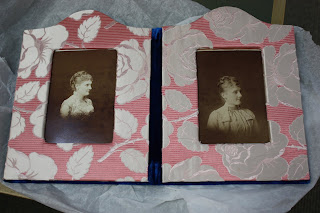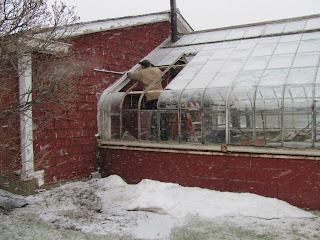Recognize the fabric on this photoframe? I did! Here's a chronicle of the sleuthing that followed.
 Museum fellows, Frances, Monica, and I sometimes stumble upon mysteries in Shelburne's vast collection. While looking through a box of miscellaneous objects, I knew I had seen this fabric before.
Museum fellows, Frances, Monica, and I sometimes stumble upon mysteries in Shelburne's vast collection. While looking through a box of miscellaneous objects, I knew I had seen this fabric before.Not only is the lovely pink silk damask worn by the woman in the photograph, it is also identical to the iconic bodice by Charles Frederick Worth from the Museum's upcoming In Fashion exhibition! My excitement could not be contained; could I, the brand new fellow, have discovered the missing link? If I was Sherlock, Museum Archivist Polly Darnell was my Watson. She determined the woman pictured to be Frances Sarah (Dolly) von Stade thanks to extensive genealogical records.
******
Only one obvious disparity left to be answered:
Is the bodice Dolly's wearing the same as the Worth?
******
Initially, I thought not because the bust and necklines are so different, but upon closer examination of the Worth bodice, and the expertise of Objects Conservator Nancie Ravenel, we determined that barring extraordinary coincidences, these bodices are one and the same! In the picture below, I'm pointing to button holes in the bust area that must have been added after the Dolly posed for the photograph. The lining in this area is much darker cream, and the button holes are smaller.

Just as in modern times, Fashion was(is) constantly changing!















